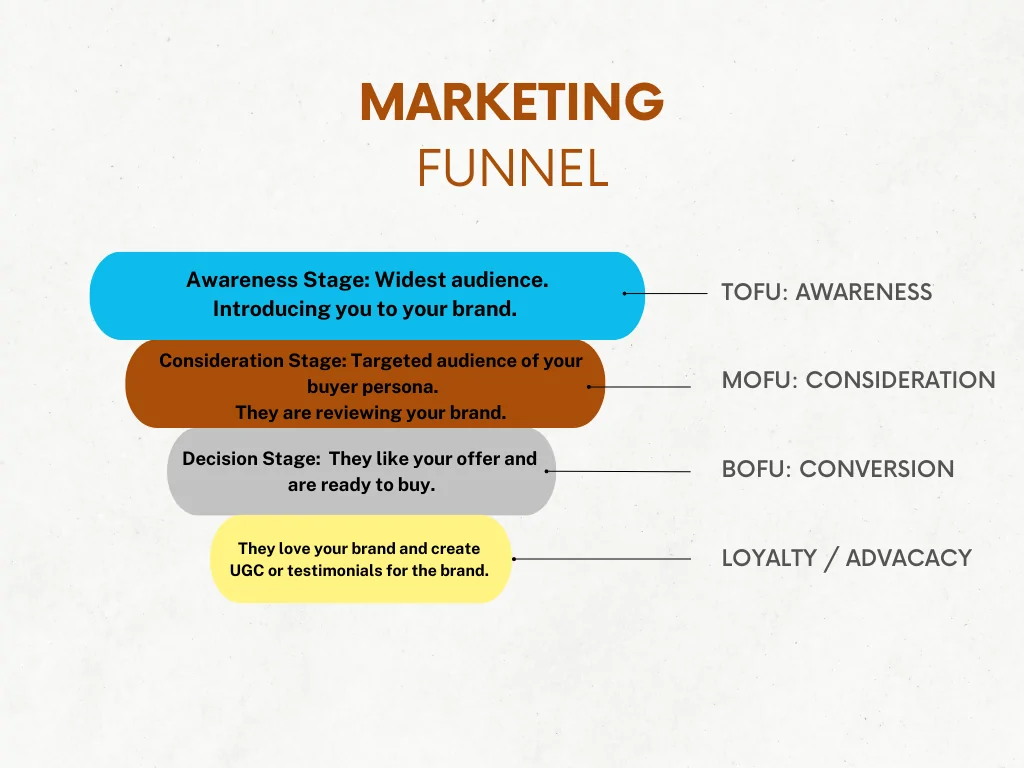
Social Media and Strategic Use of Content Marketing
If you’re not on Facebook, Instagram, YouTube, or TikTok, chances are good that your competitor is on these social platforms and using them daily to grow their customers.
Your marketing strategy must show strong content to make users stop scrolling and click on the video, post, or ad. Social media platforms’ popularity has made it critical for companies to better connect with their target audience. Selling on social platforms will reach a value of 2.9 trillion by 2026. Content marketing on social media can be the winning strategy you need to succeed in growing engagement and conversions on your social media channels.
To draw in and hold onto a clearly defined audience, content marketing entails producing and disseminating worthwhile, pertinent, and consistent material. It’s about giving your audience something of value, earning their trust, and establishing yourself as a thought leader in your field.
It’s becoming more crucial than ever for companies to incorporate content into their overall marketing plan. It’s time to become good at content creation, specifically content for social.
The capacity of content marketing to increase organic traffic to your website can be an important advantage. Unlike paid advertising, which necessitates a money outlay, organic traffic is produced by producing high-quality content that draws users to your website organically. A dual approach may be a good approach with your best content. It’s best to keep both approaches in mind.
You may improve your website’s visibility in search engine results pages (SERPs) by posting articles, videos, social media updates, and other content that is pertinent to your audience.
Content marketing can also assist you in establishing your brand as an authority in your sector. You can establish trust with your audience and establish your brand as a go-to source for knowledge and guidance by producing high-quality content that addresses their problems and adds value.
However, content marketing alone is insufficient. You need to have a strong social media plan in place if you want to really take advantage of its potential. You may share your material on social media, interact with your followers, and direct traffic back to your website. Let’s explore how we can use social media and content to grow.
Content Marketing Definition
The practice of producing and disseminating worthwhile, pertinent, and consistent material to draw in and keep a target audience is known as content marketing. Various formats, including blog posts, videos, podcasts, e-books, and social media posts, are possible for the content.
A piece of content can be promoted on various social channels to maximize organic exposure.
Building trust with your audience, delivering value, and establishing your brand as a thought leader in your sector are the objectives of content marketing.
The Advantages of Producing Excellent Content
More organic traffic to your website: When you produce high-quality content that is pertinent to your audience, you can increase website traffic. If your website’s content is interesting and informative, visitors are more inclined to click on it and stay a while. In turn, this can raise your website’s search engine positioning, making it simpler for users to find it.
Increased engagement: Engaging your audience with quality material can help. When consumers value your content, they are more inclined to interact with your business, share it on social media, and comment on your postings. By doing this, you can create a following of devoted customers and a community around your company.
Improved brand reputation: You may establish your brand as an authority in your field by producing material that is educational, practical, and interesting. This might improve the reputation of your company and make you stand out from the competition.
Content Marketing Strategy
Having excellent content is just part of the picture. It’s important to incorporate a content strategy plan to boost SEO, engage your audience, and increase traffic to your site. A content strategy plan outlines how you will create, publish, and promote your content to meet your business goals. Here are some key elements to include in your content strategy plan:
- Define your goals: What do you want to achieve with your content? Do you want to drive traffic to your site, generate leads, or build brand awareness? Define your goals to help guide your content strategy.
- Conduct audience research: Who is your target audience? What are their pain points, interests, and motivations? Conduct audience research to ensure your content is tailored to their needs.
- Define your brand strategy: Your brand should reflect the company’s big game plan to serve your customers. Decide on a consistent tone and voice to be used across all your content. Your brand style and voice will be the how-to guide on how you will design and implement your content marketing strategy.
- Choose your content types: Determine which content types you will use to achieve your goals. This can include blog posts, videos, podcasts, social media posts, and more.
- Develop a content calendar: Create a schedule for when and where you will publish your content. This will ensure you are consistent in your publishing and help you stay organized.
- Promote content: Share your content on social media, through email marketing, and on other channels to reach a wider audience. By incorporating a content strategy plan into your overall marketing strategy, you can maximize the impact of your content and drive more traffic to your site.
What Role Does Content Marketing Play in SEO?
The capacity of content marketing to enhance search engine optimization (SEO) for your website is one of its most important advantages. The goal of SEO is to improve your website’s position in search engine results pages (SERPs), such as on Google or YouTube.
There are many ways to boost your website’s SEO. You should consult with an SEO expert who can help your website with on-page optimization, technical optimization, and building backlinks to establish authority for your brand. These SEO optimization techniques can help you rank higher on Google and bring more traffic to your website.
Focus on these areas for your SEO content strategy:
• Keywords: You may increase the relevance and visibility of your website content in search results by using pertinent keywords. You can use tools like Keyword Everywhere, Ahrefs, or Semrush to help with this.
• Backlinks: When other websites link to your material, your website’s trustworthiness and authority increase, which helps your search engine rankings.
• Freshness: Because fresh material is preferred by search engines like Google, consistently publishing new content can help your website rank higher in search results. Determine what type of content makes sense for your audience and keep it fresh.
The Function of Content Marketing in Trust-Building
I trust websites that give me good advice that I can use. The YouTube channels I watch and follow are the ones I go back to when I need to learn something, and they provide content that is useful. Those are the websites or channels that I trust.
If you want to gain the trust of your audience, the key is to produce high-quality content that solves their problems and adds value. It’s not quantity anymore but the quality of your content that will build trust.
This can then result in greater brand loyalty and client retention.
People are more inclined to trust you and have a favorable opinion of your brand if they see that you are giving them something of value without expecting anything in return. You may position yourself as a go-to source for knowledge and guidance in your business by continuously producing useful material.
Consider developing a concise marketing plan that will support the expansion and success of your company by fusing content marketing with social media.

The Best Social Media Platform to Use
The effectiveness of your social media marketing activities depends on your selection of the appropriate social media sites. Every social media network has a different demographic and set of features, so not every one of them will be appropriate for your company. Increase your audience, engagement, and, eventually, return on investment by selecting the appropriate platforms.
- Facebook: The largest social networking site in the world, with over 2 billion monthly active users. It’s a great platform for companies to interact with their target market, raise brand awareness, and increase website traffic.
- Instagram: With over 1 billion monthly active users, Instagram is a photo and video-sharing app. It’s a well-liked medium for visual content, especially among younger audiences.
- Twitter: This is a microblogging site with more than 330 million active users each month. It’s a great platform for communicating with your audience in real-time and sharing news and updates.
- LinkedIn: With over 740 million users, LinkedIn is a popular professional networking platform. It’s the perfect place for B2B companies to network with industry peers, develop their brands, and create leads.
- YouTube: For content marketing, this channel allows businesses to showcase their products or services in a visual and engaging way. Whether it’s product demos, how-to guides, or educational videos, YouTube offers a wide range of video formats that businesses can use to promote their brand and provide value to their audience.
How to Choose the Right Platforms for Your Business
Decide who your target market is: Choosing the appropriate social media channels begins with determining who your target audience is. Selecting platforms that are compatible with the demographics, interests, and behavior of your audience is crucial because each platform has a distinct user base.
Think about your business goals: Your choice of social content should be influenced by your business goals. Platforms like Facebook and Instagram will be better choices if you’re trying to increase brand exposure and social selling. LinkedIn will cater to B2B leads and build relations.
While selecting social media networks, you should evaluate the resources you have at your disposal. For each platform, a successful social media strategy needs time, effort, and, occasionally, money.
If you are short on resources, it would be wiser to concentrate on one or two platforms rather than attempting to be active on all of them.
Developing an Effective Social Media Strategy
Set Specific Goals: Your social media approach needs to be in line with your company’s objectives. Clearly state your goals for using social media, such as raising brand awareness, generating leads, or increasing conversions. You can also build your strategy with funnels in mind: TOFU, MOFU, and BOFU.
Creating an effective marketing funnel based on your social goals. This will shape your content based on social channels, stage of funnel, and target audience.

Know Your Audience: To create content that is interesting, it is essential to comprehend your audience’s interests, preferences, and behavior. Utilize audience research to learn more about the material your audience like and how they interact on social media.
Produce High-Quality Content: Success on social media depends on producing high-quality content that is engaging, instructive, and relevant. Make an investment in high-quality content and present the best of your brand to make your social media profiles stand out, such as photos, videos, and written posts.
Interact with your followers: Respond to comments, questions, or inquiries. Create a community around your brand by enjoying and sharing other people’s work, reacting to comments, and engaging with your followers. Social media is a two-way street, and timely engagement is critical.
Determine where to meet your audience: Your social media marketing efforts can only be successful if you select the right social media channels. Where do they hang out, and how can you connect with them? Consider your business and branding goals and evaluate your resources.
Set goals on content and posting: Determine your content roadmap and create a content calendar to produce top-notch content every month. How much useful content you create will determine your social media presence and ability to reach and generate leads for your audience.
Utilizing Content Marketing and Social Media to Drive Paid Traffic
A thorough social media and content marketing plan must include paid advertising.
Organic still matters and is vital to your marketing efforts. Most platforms, unfortunately, employ a pay-to-play environment. The statistics for a Facebook page hovers at only around 5.2% reach volume. This means one in twenty of your followers actually see your content.
While producing high-quality content and interacting with your audience might help you generate organic traffic and value for your customers, paid advertising can exponentially help you reach a larger audience, direct traffic to your website, and eventually boost conversion rates.
Facebook Ads
As one of the most widely used social media sites, Facebook is a great place for businesses to promote. Facebook advertisements can help you connect with a big audience because there are over 2 billion monthly active users.
- Targeting Options: You can reach particular audiences using Facebook’s targeting options based on characteristics like age, gender, location, interests, and behavior. This enables you to target the audience most likely to be interested in your goods or services with advertisements.
- Ad forms: Facebook provides users with a variety of ad forms, such as picture advertisements, video ads, carousel ads, and more. It’s important to select the ad type that best serves your objectives because each ad format has its own set of best practices
YouTube Ads
YouTube is the second-largest search engine in the world, with over 2 billion monthly active users. It’s a great platform for companies using video content to reach a large audience.
- Targeting choices: You can reach particular audiences using YouTube’s targeting choices based on things like demographics, interests, and behavior. Additionally, you can target viewers based on the kind of material they’re viewing, allowing you to target particular markets with your adverts.
- Ad forms: YouTube provides a variety of ad forms, such as bumper advertising, in-stream commercials, and discovery ads. While discovery ads appear in search results and related videos, in-stream advertisements play before, during, or after a video.
Instagram Ads
Instagram is a well-known social networking site with more than 1 billion active monthly users, and it is especially well-liked by younger age groups. It’s a great platform for companies trying to connect with customers who are visual learners.
- Targeting tools: Using Instagram’s targeting tools, you may find audiences based on their age, gender, location, interests, and other characteristics. Additionally, you can focus on users depending on the Instagram posts they interact with.
- Ad forms: Instagram provides a variety of ad forms, including story advertisements, carousel ads, picture ads, and video ads. Because they let you make interesting vertical video advertising that shows between Instagram stories, story ads are very well-liked.
Ads on TikTok
With over 1 billion monthly active users, TikTok is a social media platform that is expanding quickly. It’s especially well-liked by younger demographics and is a great platform for companies trying to reach a global clientele.
- Targeting choices: You may reach particular audiences with TikTok’s targeting choices by using criteria like age, gender, location, interests, and behavior. Additionally, you can focus on users depending on the TikTok content that they interact with.
- Ad types: TikTok provides a variety of ad types, such as sponsored hashtags, brand takeovers, and in-feed advertisements. Brand takeovers are full-screen advertisements that display when the user opens the app, whereas in-feed advertisements are short, up to 60-second advertisements that appear in the user’s feed.
Your paid advertising approach should support the objectives of your company. Clearly state your goals for your sponsored advertising campaigns, such as boosting sales, driving more traffic to your website, or generating leads.
With the right combinations of purchased traffic and organic content, your business can use social media strategies to build its audience and improve traffic.
Successful Content Marketing
In the digital marketing space, every piece of content matters. Will your business be the one that your customers go to for your expertise, authority, and trustworthy content? Brand development, social selling, and content management all work together to increase traffic and sales to your channels. Having an effective overall content marketing strategy will enable you to dominate your market.